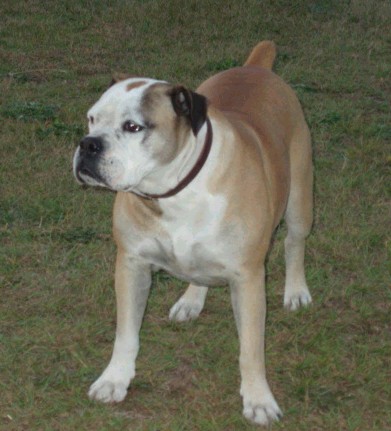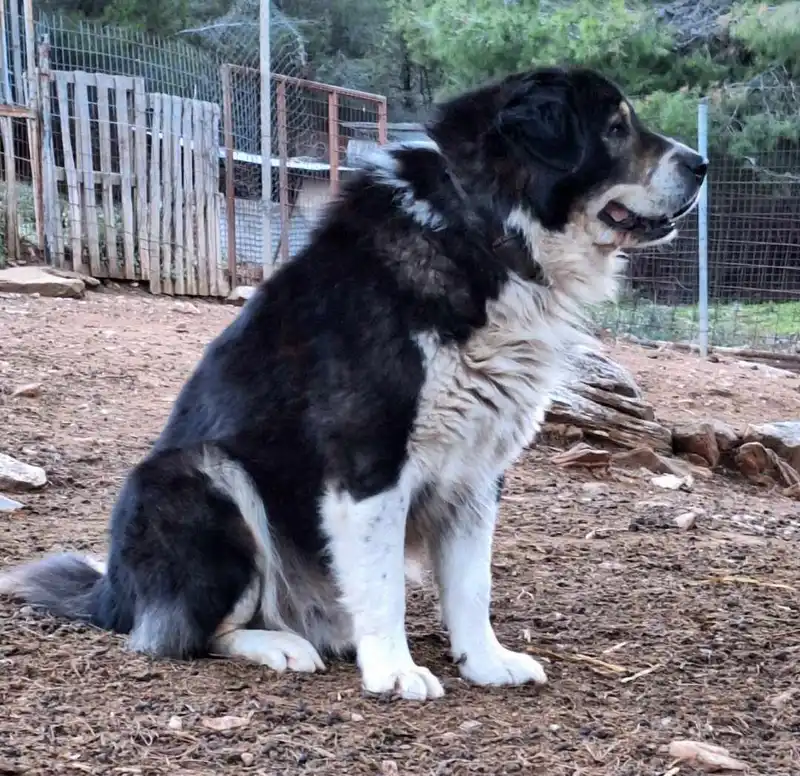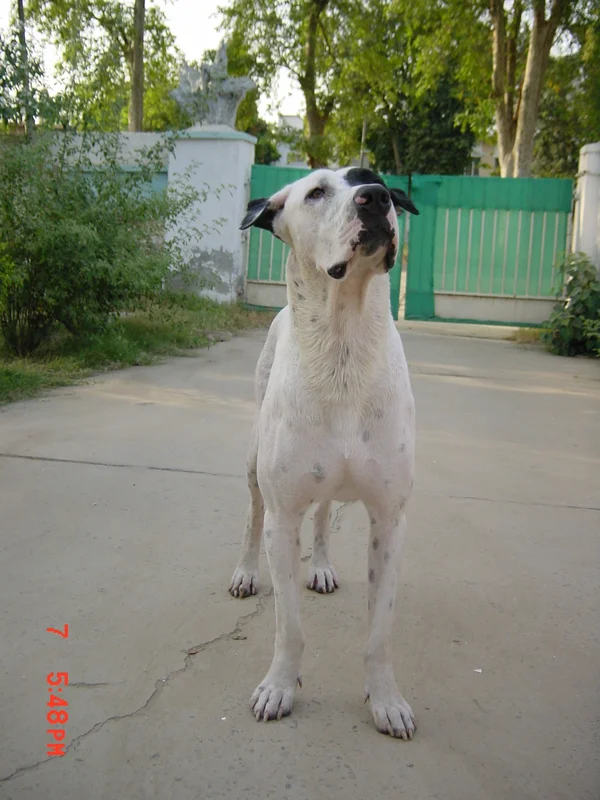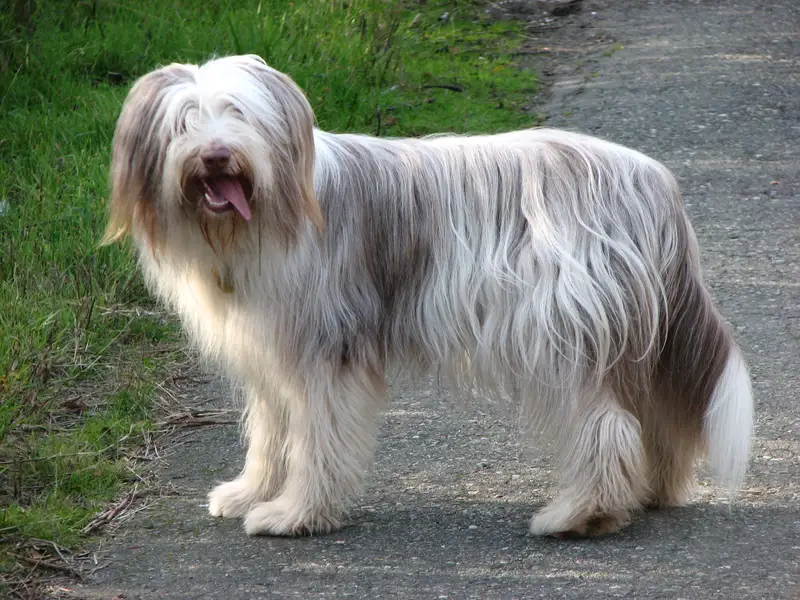Cimarron Uruguayo
The Cimarron Uruguayo is a large, courageous breed from Uruguay, known for its loyalty and protective nature. Ideal for active families.
Overview
🐕Breed Overview
✨Key Traits
💡What Makes Cimarron Uruguayo Special
One of the standout traits of the Cimarron Uruguayo is its remarkable loyalty. These dogs are known to form deep connections with their families, often displaying protective behaviors that make them excellent guardians.
Their intelligence is another defining characteristic, allowing them to excel in training and various dog sports. The Cimarron is also adaptable, thriving in both rural and urban settings as long as their exercise needs are met.
Their playful nature makes them great companions for active families, while their calm demeanor allows them to relax at home after a day of activity.
The Cimarron Uruguayo, also known as the Uruguayan Cimarron, is a remarkable breed that embodies strength, loyalty, and resilience. Originating from Uruguay, this large molosser-type dog has a rich history that dates back to the early colonizers who brought various breeds to South America. Over time, these dogs adapted to the wild, becoming known for their feral nature and later being tamed by ranchers for guarding and hunting purposes.
With a compact and muscular build, the Cimarron Uruguayo typically stands between 23 to 24 inches tall and weighs between 84 to 99 pounds, with a short coat that is usually brindle or pale yellow with a black face. The temperament of the Cimarron Uruguayo is characterized by great courage and loyalty. They are known to be protective of their families and can be wary of strangers, making early socialization essential.
This breed excels in various roles, including guarding, hunting, and participating in dog sports, showcasing their intelligence and physical prowess. Their affectionate nature towards family members makes them excellent companions, but they require consistent training and socialization to ensure they develop into well-adjusted adults. Living with a Cimarron Uruguayo requires a commitment to regular exercise and mental stimulation.
They thrive in environments that provide ample space to roam and play, making them better suited for homes with large yards or rural settings. Daily exercise routines should include long walks, jogging, and engaging playtime to keep them physically fit and mentally sharp. Overall, the Cimarron Uruguayo is a breed that embodies the spirit of Uruguay, with a rich history and a strong connection to its cultural roots.
Their loyalty, intelligence, and protective instincts make them a unique and valuable addition to any family willing to invest the time and effort into their training and care.
🎉Fun Facts
The breed's name 'Cimarron' refers to their feral origins, meaning 'wild' or 'feral' in Latin America.
The Cimarron Uruguayo is the mascot of the Uruguayan army.
They are known for their adaptability to various roles, including hunting and guarding.
Breed Characteristics
Family & Friends
Good Behavior
Get Up & Go
Household Harmony
Temperament & Personality
✨Key Traits
🐕Core Temperament
The temperament of the Cimarron Uruguayo is characterized by its loyalty, courage, and protectiveness. They are known to be affectionate with their families, often forming strong bonds with children and other pets.
However, they can be reserved or cautious around strangers, making early socialization essential. Their natural guarding instincts may lead to protective behaviors, which can be managed through consistent training.
Overall, the Cimarron is a versatile breed that thrives in active households, where they can fulfill their roles as both companions and protectors.
💫Personality Profile
The Cimarron Uruguayo is known for its loyal and courageous nature. They are protective of their families and can be wary of strangers, making them excellent guard dogs.
Their intelligence allows them to learn commands quickly, but they require consistent training and socialization from a young age to ensure they develop into well-adjusted adults. They are affectionate with their families, often forming strong bonds and enjoying playtime and interaction.
However, they can be independent thinkers, which may lead to stubbornness if not properly trained.
🔊Vocal Tendencies
The Cimarron Uruguayo has a moderate noise level. They may bark to alert their owners of strangers or unusual sounds, but they are not known to be excessive barkers.
Their vocalizations can vary from deep barks to growls, especially when they feel protective. Proper training and socialization can help manage their barking tendencies, ensuring they only vocalize when necessary.
Overall, they communicate effectively with their owners, using a range of sounds to express their needs and feelings.
Affection & Social Traits
Energy & Activity
Communication Style
Care Requirements
🏃♂️Exercise Requirements
Daily Exercise
The Cimarron Uruguayo is a large, muscular breed that requires a significant amount of exercise to maintain its physical and mental well-being. Ideally, they should engage in at least 60 to 90 minutes of vigorous exercise daily.
This can include activities such as long walks, jogging, playing fetch, or participating in dog sports like agility or obedience training. Regular exercise is crucial for preventing boredom and destructive behaviors, which can arise from insufficient physical activity.
Puppies should have shorter, more frequent play sessions to avoid overexertion, while senior dogs may require less intense activities but still benefit from daily walks and mental stimulation. Overall, consistent exercise helps manage weight, promotes cardiovascular health, and enhances the dog's overall happiness and behavior.
Preferred Activities
🏠Living & Adaptability
Space Requirements
The Cimarron Uruguayo thrives in environments that provide ample space to roam and play. Ideally, they should have access to a large yard or open area where they can run freely.
While they can adapt to apartment living if given sufficient exercise, a house with a spacious yard is preferable. Owners in smaller living spaces should ensure they can commit to regular outdoor activities to meet the dog's exercise needs.
The breed's size and energy level necessitate a living environment that allows for physical activity and mental stimulation to prevent boredom and anxiety.
Climate Preference
🍲Feeding Guide
Schedule
Food Types
Portion Size
Special Nutritional Needs
The Cimarron Uruguayo may have specific dietary needs based on its size and activity level. High-quality protein is essential for maintaining muscle mass, while healthy fats support energy levels. Owners should monitor for any food sensitivities and consult with a veterinarian to determine the best diet for their individual dog, especially during growth stages for puppies.
✨Grooming Requirements
Grooming Overview
The Cimarron Uruguayo has a short coat that requires minimal grooming. Regular brushing once a week is sufficient to remove loose hair and keep the coat healthy.
Bathing should be done as needed, typically every few months or when the dog gets particularly dirty. Regular checks of the ears, teeth, and nails are also important to maintain overall health.
Since the breed is prone to ear infections, keeping the ears clean and dry is essential, especially if they have been cropped. Overall, grooming is relatively low-maintenance compared to other breeds.
Care Schedule
Brush weekly, bathe as needed (every few months), trim nails every 2-4 weeks.
Health Profile
⚕️Health Care
Regular health care is vital for the longevity of the Cimarron Uruguayo. Routine veterinary check-ups, vaccinations, and preventive treatments can help catch potential health issues early.
Maintaining a balanced diet, providing regular exercise, and ensuring proper dental care are also essential components of their health care routine. Owners should be proactive in monitoring their dog's health and addressing any concerns promptly.
Health Issues Overview
⏳Average Lifespan
Genetic Factors
Genetics play a crucial role in the lifespan of the Cimarron Uruguayo. Like many breeds, they can be predisposed to certain hereditary health issues, such as hip and elbow dysplasia.
Responsible breeding practices that prioritize genetic diversity can help mitigate these risks. Potential owners should seek reputable breeders who conduct health screenings and genetic testing to ensure the best possible health outcomes for their puppies.
Living Conditions
The Cimarron Uruguayo's lifespan can be significantly influenced by its living environment. Dogs that have access to ample outdoor space for exercise and play tend to be healthier and live longer.
A stimulating environment that includes social interactions with people and other animals can also contribute positively to their mental health. Conversely, dogs kept in confined spaces without adequate exercise may experience stress, leading to behavioral issues and a shorter lifespan.
Owners should ensure that their Cimarron has a safe and engaging environment to thrive.
🏥Common Health Issues
Hip Dysplasia
Warning Signs
🔬Diagnosis
Veterinarians typically diagnose hip dysplasia through physical examinations and X-rays.
💊Treatment
Treatment options may include weight management, physical therapy, and in severe cases, surgical intervention.
📝Management Tips
Maintain a healthy weight, provide joint supplements, and engage in low-impact exercise to reduce stress on the joints.
Elbow Dysplasia
Warning Signs
🔬Diagnosis
Diagnosis is made through clinical examination and imaging techniques like X-rays.
💊Treatment
Treatment may involve medication for pain relief, physical therapy, or surgery.
📝Management Tips
Regular exercise and maintaining a healthy weight can help manage symptoms.
🛡️Preventive Care
🔬Hip Evaluation
Hip Evaluation assesses the hip joints for dysplasia and other abnormalities, which can lead to arthritis and mobility issues.
📅 Recommended at 12 months and before breeding.
🔬Elbow Evaluation
Elbow Evaluation checks for dysplasia and other conditions affecting the elbow joints, which can impact mobility and quality of life.
📅 Recommended at 12 months and before breeding.
Training
🧠Intelligence & Trainability
💪Work Drive
The Cimarron Uruguayo has a strong work drive, stemming from its history as a guardian and hunting dog. They thrive when given tasks or jobs to do, whether it's guarding property, participating in dog sports, or engaging in training exercises.
Mental stimulation is just as important as physical activity for this breed, as it helps prevent boredom and destructive behaviors. Activities such as agility training, obedience competitions, or even simple games of fetch can fulfill their need for engagement and keep them happy.
⚠️Training Considerations
Training a Cimarron Uruguayo can present challenges, particularly if they are not socialized properly from a young age. Their natural guarding instincts may lead to protective behaviors, which can manifest as aggression towards strangers or other animals if not managed correctly.
To overcome these challenges, early socialization is crucial, exposing them to various people, environments, and other animals. Positive reinforcement training methods work best, as these dogs respond well to rewards and praise.
Consistency and patience are key, and owners should establish themselves as calm and assertive leaders to foster a trusting relationship with their Cimarron.
📝Training Tips
Training a Cimarron Uruguayo requires a firm but gentle approach. Start with basic obedience commands, using positive reinforcement techniques to encourage good behavior.
Consistency is essential, as these dogs thrive on routine. Incorporate mental stimulation through puzzle toys and training exercises to keep them engaged.
Socialization should begin early, introducing them to different environments, people, and other animals to help them develop into well-rounded adults. Regular training sessions, combined with physical exercise, will help channel their energy positively and strengthen the bond between owner and dog.
History & Heritage
📜Origin Story
The Cimarron Uruguayo's origin is deeply rooted in the history of Uruguay, where early European colonizers brought various dog breeds to assist with livestock and hunting. As these dogs were abandoned or escaped, they formed feral populations that adapted to the local environment.
By the 18th century, the Cimarron had become notorious for its wild nature, leading to government efforts to control their population through hunting. However, ranchers recognized their potential as loyal and protective companions, capturing and training them for guarding duties.
This duality of being both a feared wild animal and a beloved guardian has shaped the Cimarron's identity, making it a symbol of national pride in Uruguay.
⏳Development History
The Cimarron Uruguayo descends from European dogs brought to South America by early colonizers, which were either released or abandoned. Over time, these dogs adapted to the wilds of Uruguay, leading to a population that thrived in the region.
In the 18th century, as the dogs began to pose a threat to livestock, they were hunted, and bounties were placed on them. Despite this, many Cimarrones survived, particularly in the highlands of Cerro Largo, where ranchers began to capture and tame them for use as guard dogs.
The breed was officially recognized by the Uruguayan Kennel Club after extensive documentation efforts by breeders and enthusiasts, and it gained provisional recognition from the Fédération Cynologique Internationale in 2006.
🛡️Purpose & Historical Role
Historically, the Cimarron Uruguayo served multiple roles, including guarding livestock, hunting, and participating in various dog sports. Their fierce loyalty and protective instincts made them ideal companions for ranchers and gauchos, who relied on them to protect their homes and herds from predators. In modern times, they continue to excel in guarding roles and are also recognized for their capabilities in dog sports, showcasing their intelligence and physical prowess.
🏺Cultural Significance
The Cimarron Uruguayo holds a special place in Uruguayan culture, symbolizing strength and resilience. Historically, these dogs were seen as guardians of livestock and homes, embodying the spirit of the gauchos, the traditional cowhands of Uruguay.
Their fierce nature and loyalty have made them a national symbol, and they are even the mascot of the Uruguayan army. The breed's survival story, from feral origins to a recognized companion and working dog, reflects the cultural heritage of Uruguay, where they are celebrated for their courage and adaptability.
Conservation Status
This breed is less common but has stable populations in certain regions.









